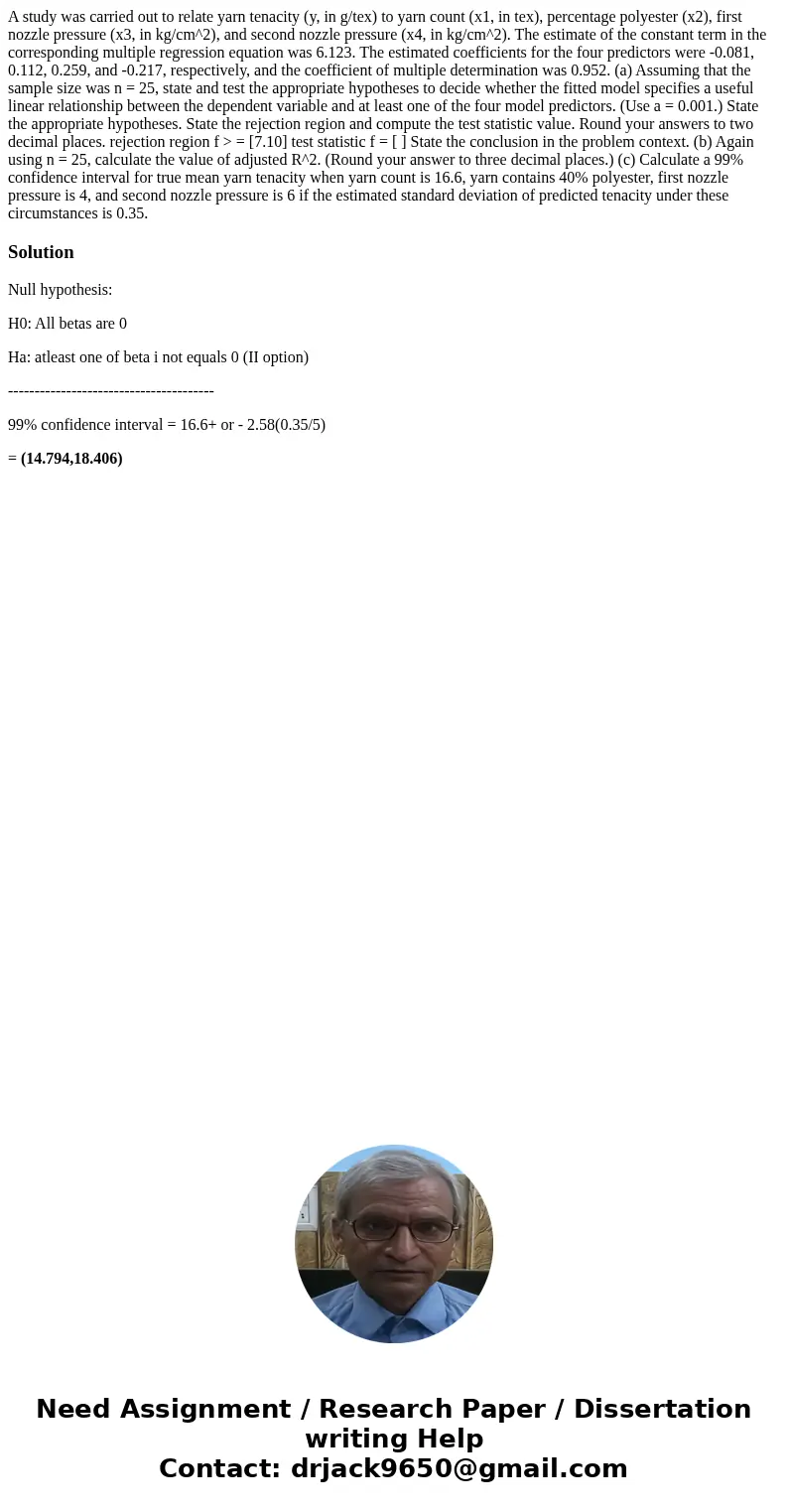A study was carried out to relate yarn tenacity y in gtex to
A study was carried out to relate yarn tenacity (y, in g/tex) to yarn count (x1, in tex), percentage polyester (x2), first nozzle pressure (x3, in kg/cm^2), and second nozzle pressure (x4, in kg/cm^2). The estimate of the constant term in the corresponding multiple regression equation was 6.123. The estimated coefficients for the four predictors were -0.081, 0.112, 0.259, and -0.217, respectively, and the coefficient of multiple determination was 0.952. (a) Assuming that the sample size was n = 25, state and test the appropriate hypotheses to decide whether the fitted model specifies a useful linear relationship between the dependent variable and at least one of the four model predictors. (Use a = 0.001.) State the appropriate hypotheses. State the rejection region and compute the test statistic value. Round your answers to two decimal places. rejection region f > = [7.10] test statistic f = [ ] State the conclusion in the problem context. (b) Again using n = 25, calculate the value of adjusted R^2. (Round your answer to three decimal places.) (c) Calculate a 99% confidence interval for true mean yarn tenacity when yarn count is 16.6, yarn contains 40% polyester, first nozzle pressure is 4, and second nozzle pressure is 6 if the estimated standard deviation of predicted tenacity under these circumstances is 0.35. 
Solution
Null hypothesis:
H0: All betas are 0
Ha: atleast one of beta i not equals 0 (II option)
---------------------------------------
99% confidence interval = 16.6+ or - 2.58(0.35/5)
= (14.794,18.406)

 Homework Sourse
Homework Sourse